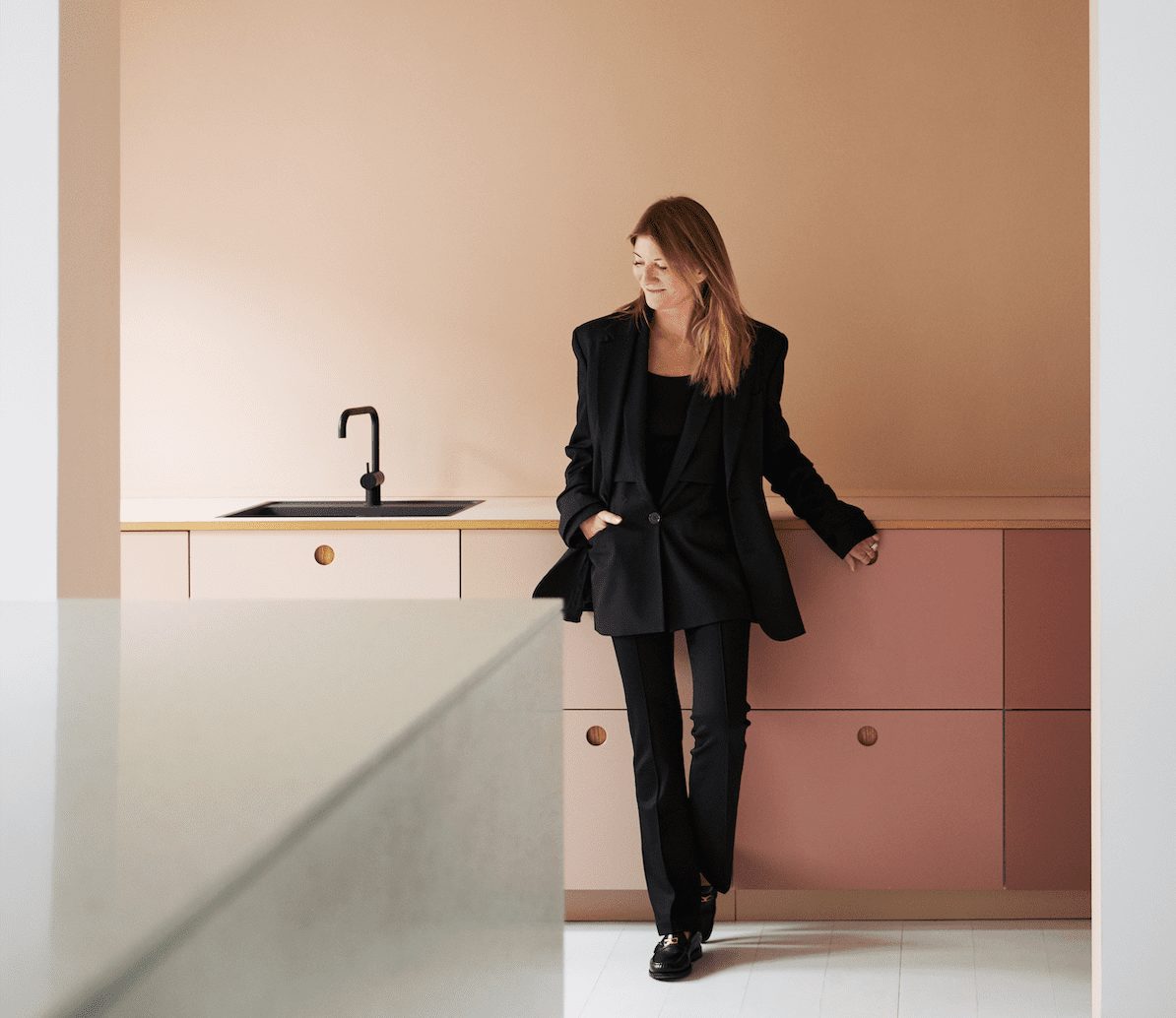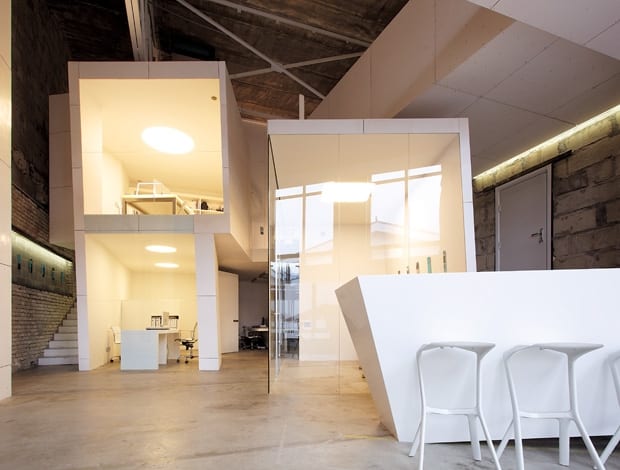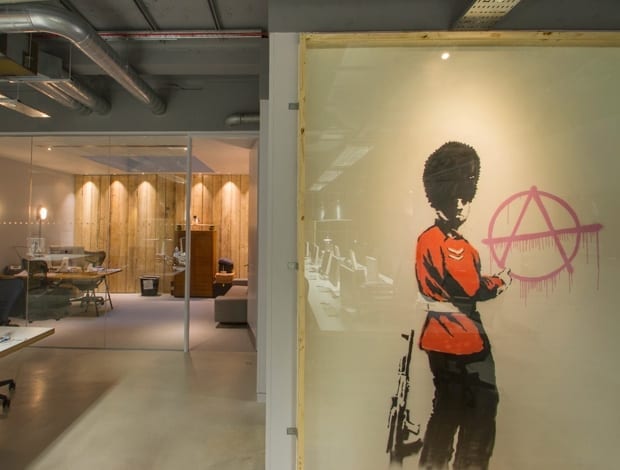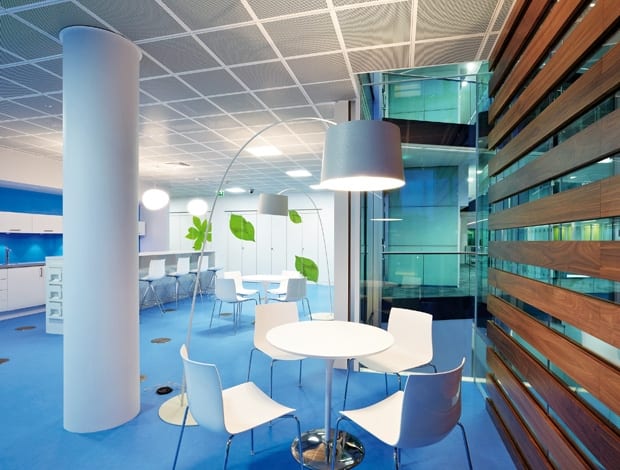 Hayward Gallery’s iconic roof pyramids. Photo: Morley Von Sternberg|||
Hayward Gallery’s iconic roof pyramids. Photo: Morley Von Sternberg|||
London’s Hayward Gallery, one of the city’s brutalist landmarks, has returned after a two-year renovation closure. On a rather blistering and cold winter’s morning, a first peek into the gallery after its restoration was uplifting – despite it taking a moment to absorb the major differences visitors were greeted with a pleasant reminder of the gallery we all know and adore.
Not too much has changed on first glance, beyond a notably cleaned-up interior, but on closer inspection – and before venturing to the upper levels – it’s a pleasant, necessary and spotless upgrade that seems astonishingly healthy. Feilden Clegg Bradley Studios (FCBStudios), an architecture practice with an international reputation for sustainability and environmental expertise, was appointed with a brief to refurbish the interior of the Southbank Centre’s most notable space.
The goal was to reintroduce natural light into the upper galleries of the Hayward, alongside replacing the existing mechanical and electrical framework, in order to support the building for its future use as an exhibition space for visual and performance art.
Acheiveing natural lighting was key to the works
In terms of natural light, the key element was to introduce a new roofscape of pyramids to replace the Hayward’s original roof. Back in the 1960s, natural light was seen as less of a necessity than it is today with our focus on wellbeing, meaning that the 66 distinctive glass pyramids that form this most recognisable feature of the Southbank Centre became outdated – simply put, they didn’t work – and achieving a source of natural daylight through the roof had become crucial.
 The Hayward’s new sun-drenched interiors. Photo: Morley Von Sternberg
The Hayward’s new sun-drenched interiors. Photo: Morley Von Sternberg
“The approach has been one of thought, development and consideration,” says Richard Battye, associate at FCBStudios. “This was most apparent with the brief for the new roof and pyramid design where, in collaboration with Southbank Centre and [engineer] Max Fordham, we were all able to develop and test what the new roof could and should achieve for the galleries beneath.“
At the opening presentation in January, Hayward Gallery director Ralph Rugoff explained how the situation came about: ”The Hayward for 50 years had rooflights that weren’t letting any light in – it’s a long story but Henry Moore, who was an advisor at the Arts Council, insisted they came with the building over the objections of the architects. Then they put a terrible drop ceiling under them, which cut out all the light coming in and the equitable grandeur of the galleries.”
‘Very fond of the concrete buildings’
He adds: “It finally feels like these spaces now have the proportion they were always meant to have, and that the genius of the building was fully revealed for the first time.”
Battye explains how the entire renovation was in fact more of a conservation project, rather than an effort to rebuild and reshape the structure. The intention was to “preserve and conserve the features that make it so distinctively the Hayward Gallery”, he says.
 Brutalist beauty: the Hayward Gallery’s staircase. Photo: Morley Von Sternberg
Brutalist beauty: the Hayward Gallery’s staircase. Photo: Morley Von Sternberg
The aim, Battye elaborates, was to retain its “form and the series of linked changing gallery spaces, the exquisite board-marked concrete, the tension between the white walls and the concrete stairs”.
He explains: “The Southbank Centre and Hayward Gallery team are very fond of their concrete buildings, as are we, and preserving their uniqueness while at the same time readying them for the future was a straightforward decision.”
To achieve this preservation but to also create a future-forward structure, certain technologies and innovative materials were used. As part of the renovation various data and AV cabling routes, air-handling units, wiring and switchgear, connections to the Southbank Centre’s heating system, were removed and replaced, says Battye. “Most of this was installed in the 1960s and coming up to 50 years old, so taking it all out and replacing it was the best way to prepare the galleries for the future.”
‘Gursky’s photographs and the refurbished galleries both have space to be experienced’
Overall, the reaction to the gallery’s reopening was a huge success, with Rugoff saying that the new refurbishment looked “better than it did the day it opened”. What’s more, a huge retrospective of photographer Andreas Gursky’s work had been chosen to exhibit alongside the gallery’s opening, with both components sitting harmoniously side by side in the most impeccable amount of glorious natural light.
 Andreas Gursky reopens the new Hayward. Photo: Ayla Angelos
Andreas Gursky reopens the new Hayward. Photo: Ayla Angelos
Battye concludes: “The show feels like a perfect piece of reopening curation for the Hayward. Gursky’s photographs and the refurbished galleries both have space to be experienced – neither is overpowered or overpowering.”
After two years, London’s Hayward Gallery has reopened with a new roof structure that fills its upper floors with natural light































